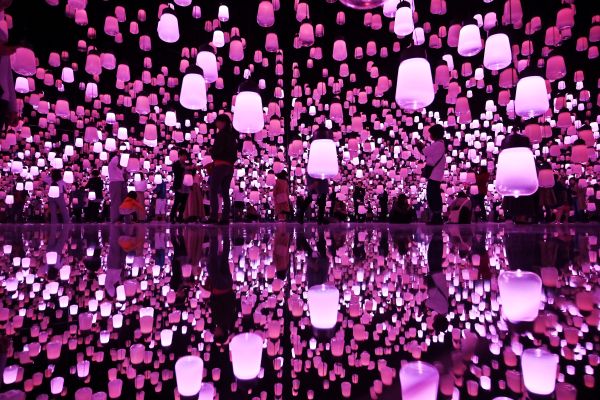The Knight Foundation launches $750,000 initiative for immersive technology for the arts - 5 minutes read
 The Knight Foundation launches $750,000 initiative for immersive technology for the arts – TechCrunch
The Knight Foundation launches $750,000 initiative for immersive technology for the arts – TechCrunchThe John S. and James L. Knight Foundationis looking for pitches on how to enhance and augment traditional creative arts through immersive technologies.
Through a partnership with Microsoft the foundation is offering a share of a $750,00 pool of cash and the option of technical support from Microsoft, including mentoring in mixed-reality technologies and access to the company’s suite of mixed reality technologies.
“We’ve seen how immersive technologies can reach new audiences and engage existing audiences in new ways,” said Chris Barr, director for arts and technology innovation at Knight Foundation, in a statement. “But arts institutions need more knowledge to move beyond just experimenting with these technologies to becoming proficient in leveraging their full potential.”
Specifically, the foundation is looking for projects that will help engage new audiences; build new service models; expand access beyond the walls of arts institutions; and provide means to distribute immersive experiences to multiple locations, the foundation said in a statement.
“When done right, life-changing experiences can happen at the intersection of arts and technology,” said Victoria Rogers, Knight Foundation vice president for arts. “Our goal through this call is to help cultural institutions develop informed and refined practices for using new technologies, equipping them to better navigate and thrive in the digital age.”
Launched at the Gray Area Festival in San Francisco, the new initiative is part of the Foundation’s art and technology focus, which the organization said is designed to help arts institutions better meet changing audience expectations. Last year, the foundation invested $600,000 in twelve projects focused on using technology to help people engage with the arts.
“We’re incredibly excited to support this open call for ways in which technology can help art institutions engage new audiences,” says Mira Lane, Partner Director Ethics & Society at Microsoft. “We strongly believe that immersive technology can enhance the ability for richer experiences, deeper storytelling, and broader engagement.”
Here are the winners from the first $600,000 pool:
Developing forecasting software that enables cultural institutions to make data-centered decisions in planning their seasons and events.
Exploring how conversational interfaces, like Amazon Alexa, can provide remote audiences with access to an exhibition experience at Cooper Hewitt, Smithsonian Design Museum.
Using 360-degree photography technology to capture and share the exhibit experience in an engaging, virtual way for remote audiences.
Developing mobile software to deliver immersive audio-only stories that museum visitors would experience when walking up to art for a closer look.
Creating a system of smart labels that combine ultra-thin touch displays and microcomputers to deliver interactive informational content about artwork to audiences.
Making theater and performance art more accessible for the deaf, hard of hearing and non-English speaking communities by integrating augmented reality smart glasses with an open access smart captioning system to accompany live works.
Developing a mobile app for classical music audiences that receives real-time program notes at precisely-timed moments of a live musical performance.
Encouraging public input on new forms of historical monuments through a digital tool that allows users to identify locations, topics and create designs for potential public art and monuments in our cities.
Prototyping a tool in the form of a smartphone/tablet app for cultural institutions to capture visitor demographic data, increasing knowledge on who is and who is not participating in programs.
Enabling audiences to share immediate feedback and reflections on art by designing hardware and software to test recording and sharing of audience thoughts.
Producing touchscreen installations in public locations that allow users to create and share poetry by reflecting on and responding to historical documents, oral histories, and multimedia stories about current events and community issues.
Using crowdsourcing methods to improve Wikipedia descriptions of artworks in major collections so people can better access and understand art virtually.
Source: TechCrunch
Powered by NewsAPI.org
Keywords:
John S. and James L. Knight Foundation • Immersive technology • TechCrunch • Immersive technology • Microsoft • Technical support • Microsoft • Mixed reality • Mixed reality • Immersive technology • John S. and James L. Knight Foundation • Institution • Knowledge • Technology • Conceptual model • Technology • John S. and James L. Knight Foundation • Economic development • Emerging technologies • Information Age • Area Festival • San Francisco • Art • Technology • Organization • Institution • Technology • Art • Institution • Ethics • Society • Microsoft • Immersive technology • Data • Conversation • Amazon Alexa • Experience • Cooper Hewitt, Smithsonian Design Museum • Photography • Technology • Qualia • Virtual reality • Mobile app • Immersion (virtual reality) • Sound • Narrative • Computer • Radio-frequency identification • Display device • Interactivity • Visual arts • Performance art • Accessibility • English studies • Augmented reality • Smartglasses • Open access • Closed captioning • Mobile app • Classical music • Digital data • Tool • Design • Public art • Prototype • Tool • Smartphone • Tablet computer • Mobile app • Demography • Knowledge • Software • Feedback • Art • Computer hardware • Software • Sound recording and reproduction • Audience • Touchscreen • Poetry • Oral history • Multimedia • Narrative • News • Community • Crowdsourcing • Methodology • Wikipedia • Work of art • Art •